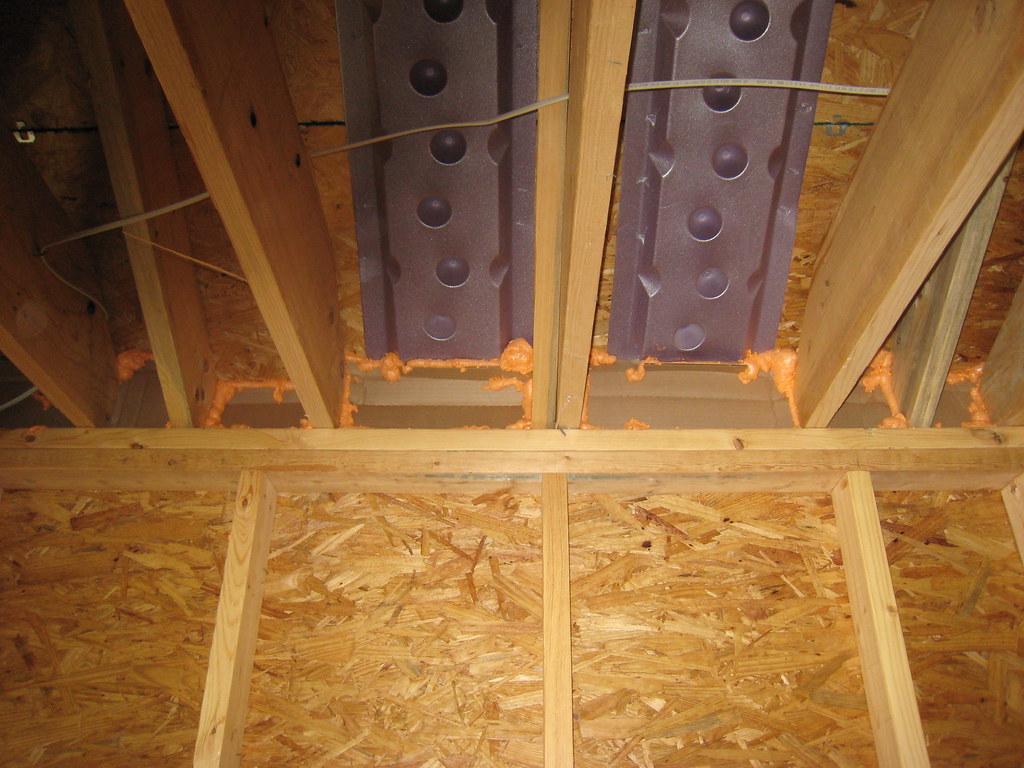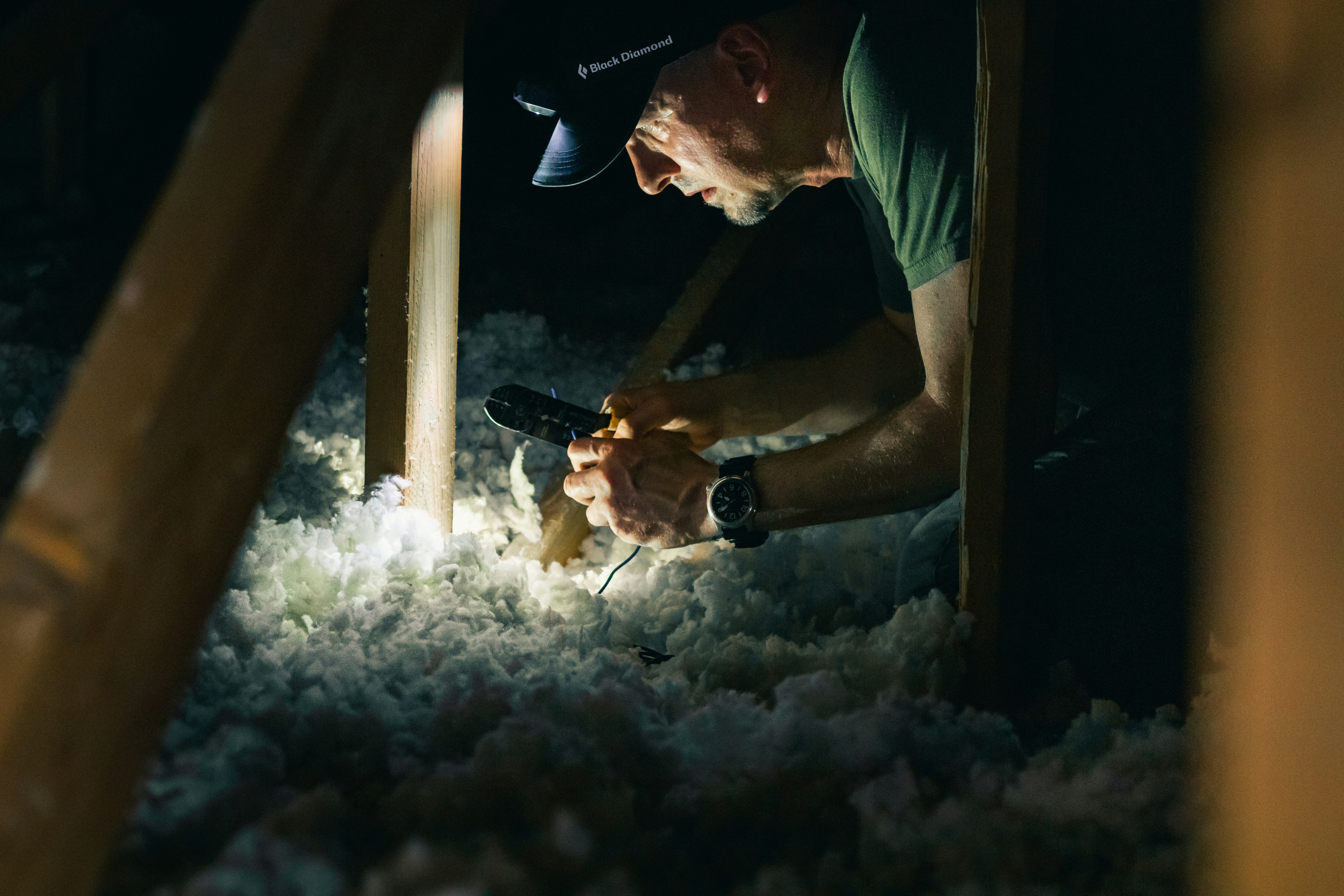Are you tired of dealing with high energy bills and uncomfortable temperatures in your home? Look no further! In this comprehensive review, we will delve into the world of attic insulation and provide you with the ultimate guide to choosing the best one for your needs. With so many options available, it can be overwhelming to determine which insulation will effectively regulate your home's temperature, reduce energy consumption, and ultimately save you money. But fear not! We have done the research for you and compiled all the essential information you need to make an informed decision. So, get ready to transform your attic into an energy-efficient haven as we explore the ins and outs of attic insulation in this ultimate guide.
Attic insulation plays a crucial role in maintaining the energy efficiency and comfort of a home. The attic is often one of the biggest sources of heat loss or gain, depending on the season. Without proper insulation, the hot or cold air from outside can easily seep into the living spaces, making it harder to maintain a comfortable temperature indoors. Additionally, inadequate insulation can lead to higher energy bills as the HVAC system works harder to compensate for the temperature fluctuations. By properly insulating the attic, homeowners can create a barrier that prevents heat transfer, reduces energy consumption, and enhances the overall comfort of their home.
There are several types of insulation materials available for attics, each with its own set of pros and cons. Fiberglass insulation is a popular choice due to its affordability and ease of installation. It is effective in reducing heat transfer and is resistant to moisture. However, fiberglass can be irritating to the skin and lungs if not handled properly. Another option is cellulose insulation, which is made from recycled paper products. It has excellent thermal performance and is environmentally friendly. However, it can settle over time, reducing its effectiveness. Spray foam insulation is a more expensive option but provides superior insulation and air sealing properties. It can also help to reduce noise transmission. However, it requires professional installation and may release harmful chemicals during the application process.
When selecting attic insulation, there are several factors to consider. The R-value, or thermal resistance, of the insulation is an important factor to determine its effectiveness. The higher the R-value, the better the insulation's ability to resist heat transfer. The climate in which the home is located should also be taken into account. Homes in colder climates may require higher R-value insulation to prevent heat loss, while homes in warmer climates may focus more on preventing heat gain. The type of construction and layout of the attic should also be considered. For example, an attic with limited space may require insulation that can be blown in or sprayed. Additionally, budget constraints and personal preferences should also be taken into consideration when choosing attic insulation.
When it comes to attic insulation, there are various materials to choose from. Each material has its own advantages and disadvantages. Fiberglass insulation, for example, is popular due to its affordability and effectiveness in preventing heat transfer. On the other hand, cellulose insulation is made from recycled materials and provides excellent soundproofing. Spray foam insulation offers superior insulation properties but can be more expensive. It's important to compare these materials based on factors such as cost, R-value, and environmental impact to determine the best option for your attic insulation needs.
Proper installation of attic insulation is crucial for its effectiveness. One common technique is the "blown-in" method, where loose insulation material is blown into the attic using a machine. This method allows for even distribution of insulation and is suitable for hard-to-reach areas. Another technique is the "batt" method, which involves placing pre-cut insulation panels between the attic joists. This method is relatively easy to install but may require more time and effort. It's important to follow manufacturer guidelines and consult professionals to ensure the insulation is installed correctly and optimally.
Maintaining and upgrading your attic insulation can help improve energy efficiency and reduce heating and cooling costs. Regularly inspect your attic insulation for signs of damage, such as gaps or compression. Address any issues promptly by adding additional insulation or repairing damaged areas. Upgrading your attic insulation to a higher R-value can also enhance its effectiveness. Additionally, consider sealing air leaks and improving ventilation in your attic to further optimize energy efficiency. Consulting with insulation professionals can provide valuable guidance on maintenance and upgrade options for your attic insulation.

Proper attic insulation plays a crucial role in improving energy efficiency in homes. By effectively insulating your attic, you can prevent heat loss during the winter and keep your home cooler in the summer. Insulation acts as a barrier, reducing the transfer of heat between the attic and the living space. This helps to maintain a comfortable temperature inside your home and reduces the need for excessive heating or cooling, resulting in lower energy bills.
When installing attic insulation, it is important to avoid common mistakes that can undermine its effectiveness. One common mistake is not sealing air leaks before installing insulation. Air leaks can allow warm or cool air to escape, reducing the insulation's efficiency. Another mistake is using the wrong type or insufficient amount of insulation for your climate zone. It is essential to choose the right insulation material and ensure proper installation to maximize its benefits. Additionally, compressing insulation or blocking ventilation can lead to moisture issues and reduced insulation performance.
Attic insulation can significantly impact indoor air quality. Properly installed insulation helps to create a barrier that prevents air pollutants, such as dust, pollen, and outdoor pollutants, from entering the living space. It also reduces the infiltration of outdoor odors and allergens. Moreover, insulation can help to control moisture levels, preventing the growth of mold and mildew, which can negatively affect indoor air quality. Adequate attic insulation improves the overall comfort and health of your home by maintaining a clean and healthy indoor environment.

When it comes to attic insulation, one of the most important factors to consider is the R-value. The R-value measures the insulation's ability to resist heat flow, with a higher value indicating better insulation. To determine the best insulation thickness for your attic, you need to assess the recommended R-value for your climate zone. This will help you choose the appropriate insulation thickness to optimize energy efficiency and reduce heating and cooling costs.
The climate zone in which your home is located plays a significant role in determining the type and amount of attic insulation needed. Different climate zones have varying temperature ranges and weather conditions, which affect the insulation requirements. For example, homes in colder climates may require thicker insulation to combat heat loss, while homes in warmer climates may prioritize insulation that helps keep the heat out. Understanding your climate zone will help you choose the most effective attic insulation solution for your specific needs.
In addition to traditional insulation materials like fiberglass and cellulose, there are alternative options available for attic insulation. Spray foam insulation, for example, provides an airtight seal and excellent thermal performance. Radiant barriers, on the other hand, reflect heat away from the attic, helping to keep the space cooler. Other options include rigid foam insulation and blown-in insulation. Exploring these alternative insulation options can help you find the best solution for your attic, considering factors such as budget, energy efficiency goals, and specific insulation needs.
When it comes to attic insulation, two popular options are fiberglass and cellulose. Fiberglass insulation is made from tiny glass fibers that are woven together. It is known for its durability and resistance to moisture. Fiberglass insulation is also fire-resistant and does not provide a food source for pests. On the other hand, cellulose insulation is made from recycled paper products, such as newspaper, and is treated with fire-retardant chemicals. It is known for its excellent thermal performance and ability to reduce noise. Both fiberglass and cellulose insulation have their advantages and disadvantages, so it is important to consider factors such as cost, R-value, and environmental impact when choosing the right insulation type for your attic.
Attic ventilation plays a crucial role in the overall performance of attic insulation. Proper ventilation helps to regulate the temperature and humidity levels in the attic, which can directly impact the effectiveness of insulation. Without adequate ventilation, heat and moisture can build up in the attic, leading to a variety of problems such as mold growth, wood rot, and reduced insulation performance. On the other hand, excessive ventilation can cause energy loss and increase heating and cooling costs. It is important to strike the right balance between ventilation and insulation to ensure optimal energy efficiency and a healthy attic environment. Consulting with a professional insulation contractor can help you determine the best ventilation strategy for your attic.
Vapor barriers are an essential component of attic insulation systems. They are designed to prevent the movement of moisture from the living spaces into the attic and vice versa. In cold climates, vapor barriers are typically installed on the warm side of the insulation to prevent warm, moist air from condensing on the cold surfaces within the attic. This helps to prevent mold growth, wood rot, and other moisture-related issues. In warm climates, vapor barriers are usually installed on the underside of the insulation to prevent warm, humid air from entering the attic and causing moisture problems. The proper installation of vapor barriers is crucial to ensure the long-term performance and durability of attic insulation.

When it comes to attic insulation, cost-effectiveness is an important consideration. There are several solutions available that can help you achieve optimal insulation without breaking the bank. One option is to use blown-in insulation, which can be a more affordable alternative to traditional fiberglass or cellulose insulation. Another cost-effective solution is to seal any air leaks in your attic, as this can significantly improve the efficiency of your insulation. Additionally, considering the long-term savings on energy bills, investing in high-quality insulation materials upfront can be a cost-effective choice in the long run.
With the increasing focus on sustainability and environmental impact, using eco-friendly attic insulation materials has become a popular choice. There are several options available that are not only effective in insulating your attic but also have a minimal environmental footprint. One such material is recycled cellulose insulation, which is made from recycled paper products. Another eco-friendly option is natural wool insulation, which is derived from sheep's wool. These materials not only provide excellent insulation but also contribute to reducing waste and promoting sustainability.
If you're looking to soundproof your home, attic insulation can play a crucial role. By effectively insulating your attic, you can minimize the transmission of sound from outside or between different rooms in your house. To achieve the best soundproofing results, it is important to choose insulation materials with high sound absorption properties, such as mineral wool or foam insulation. Additionally, ensuring proper installation and sealing any gaps or air leaks can further enhance the soundproofing capabilities of your attic insulation. Consulting with a professional can help you determine the best practices for soundproofing your specific attic space.
In conclusion, the Ultimate Guide to Choosing the Best Attic Insulation provides a comprehensive review of the topic and its significance. Attic insulation plays a crucial role in maintaining the energy efficiency of a home, reducing heating and cooling costs, and improving overall comfort. With the increasing focus on sustainable living and energy conservation, selecting the right attic insulation has become more important than ever. This guide offers valuable insights into different types of insulation, their pros and cons, installation methods, and cost considerations. It empowers homeowners to make informed decisions that can have a significant impact on their energy consumption and carbon footprint. By choosing the best attic insulation, individuals can contribute to a more sustainable future while enjoying the immediate benefits of reduced energy bills and enhanced comfort in their homes.